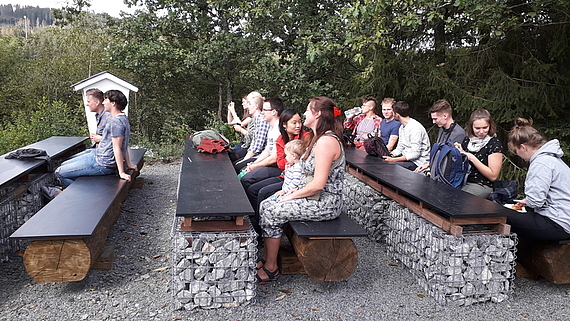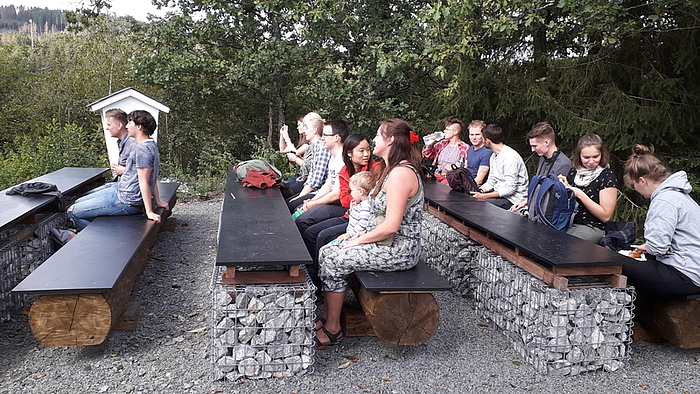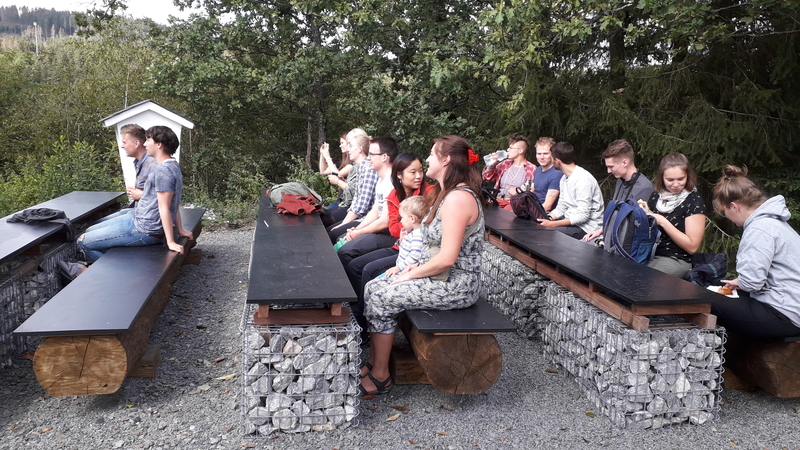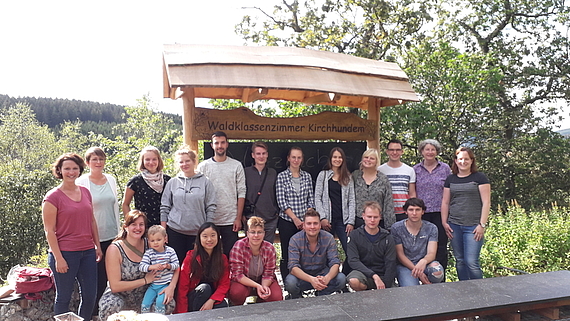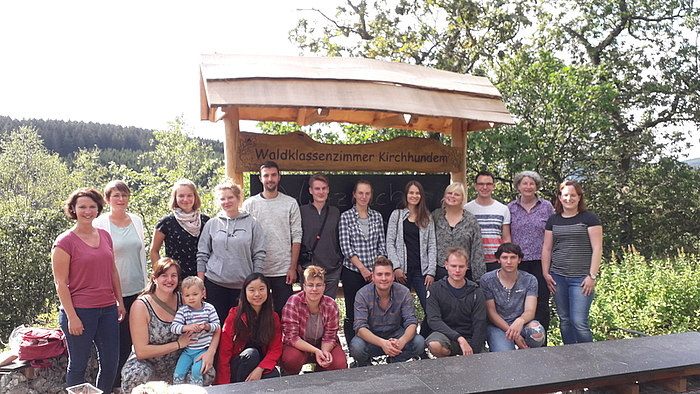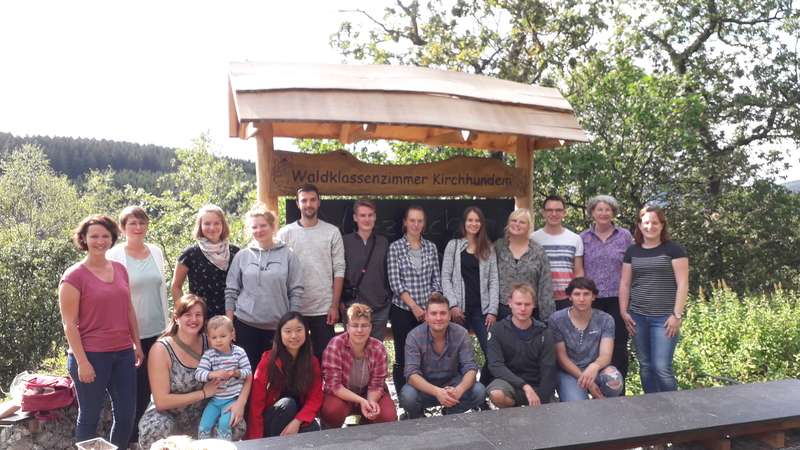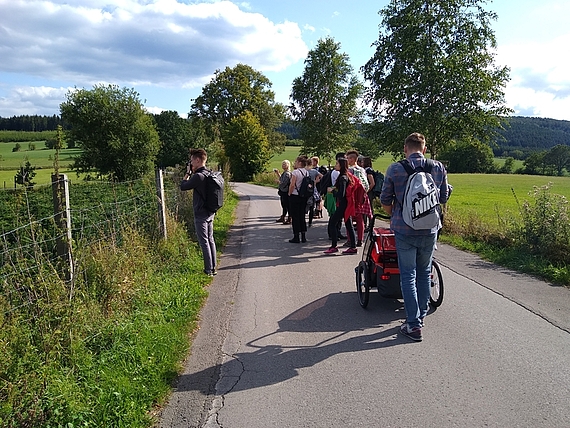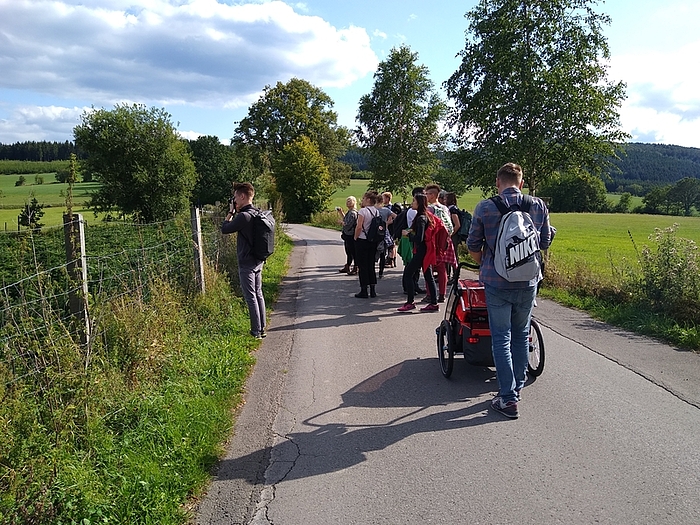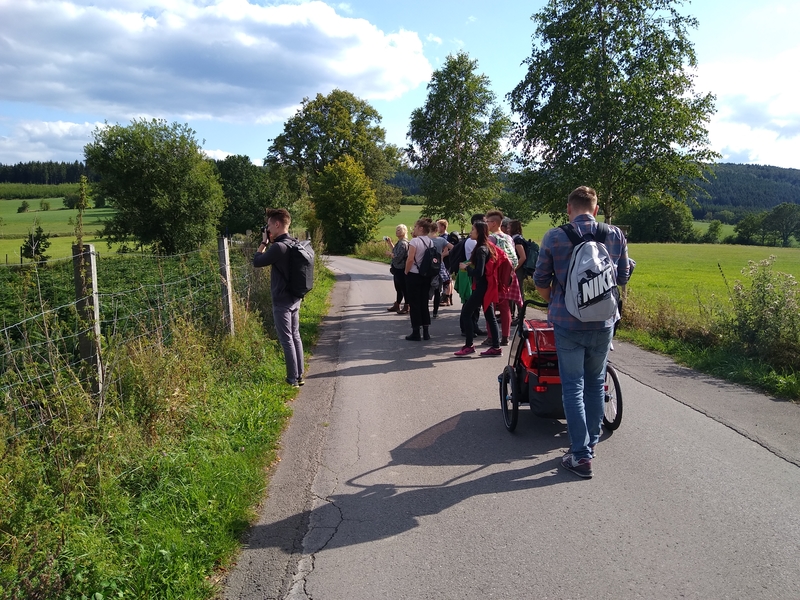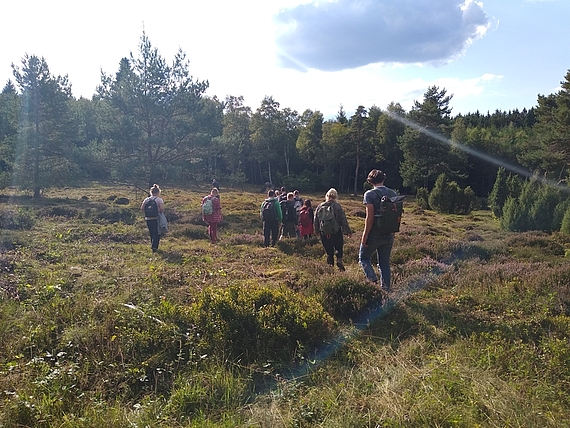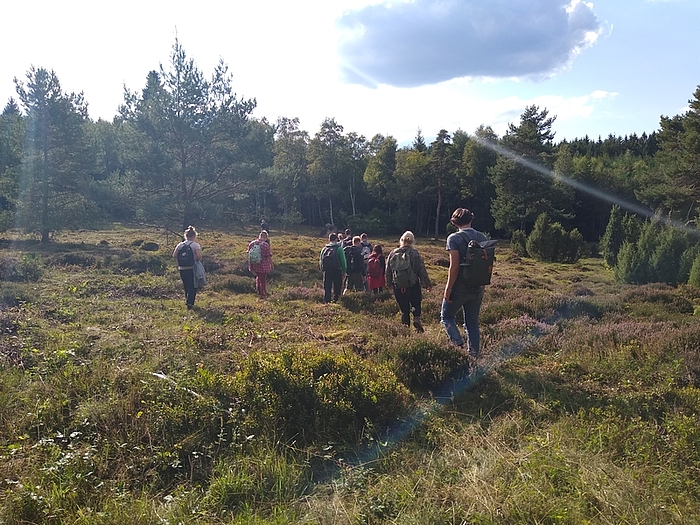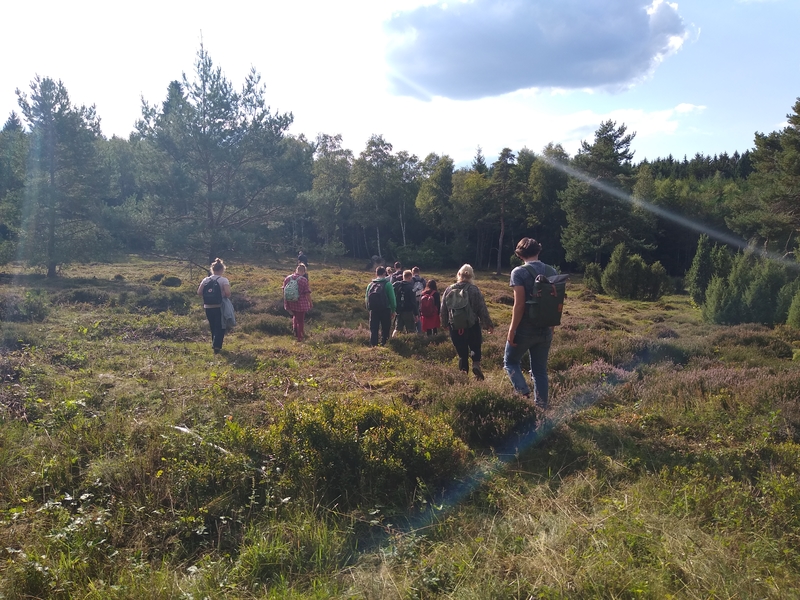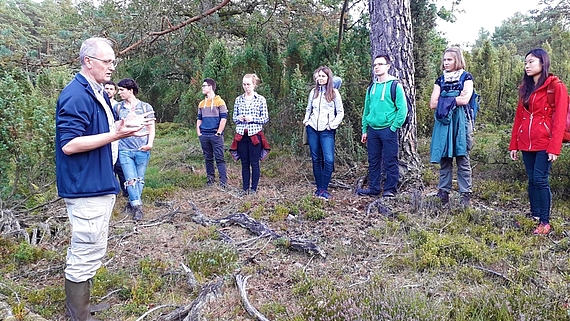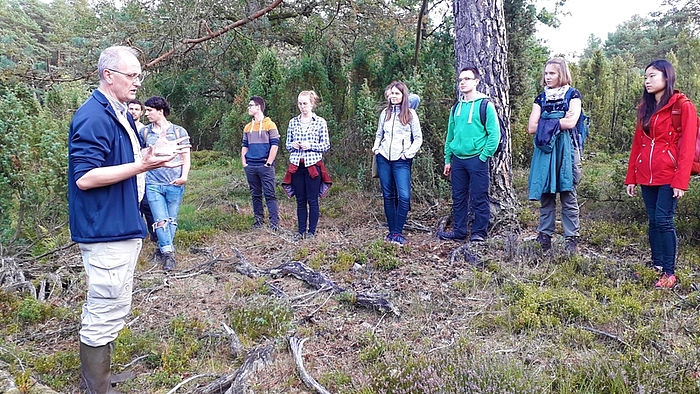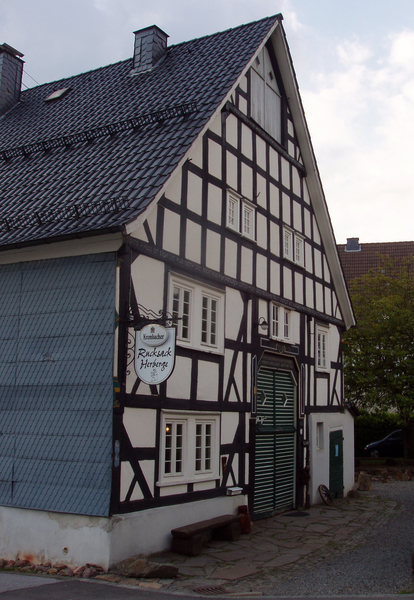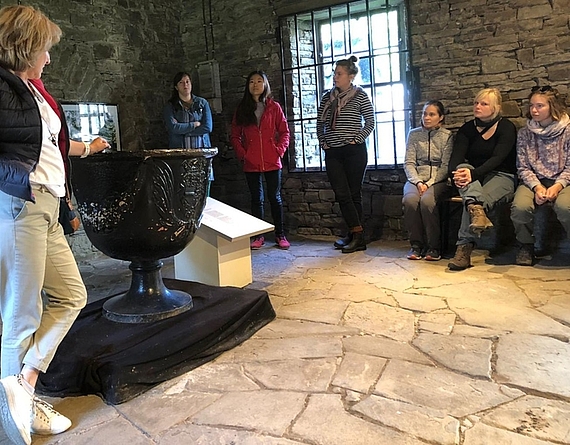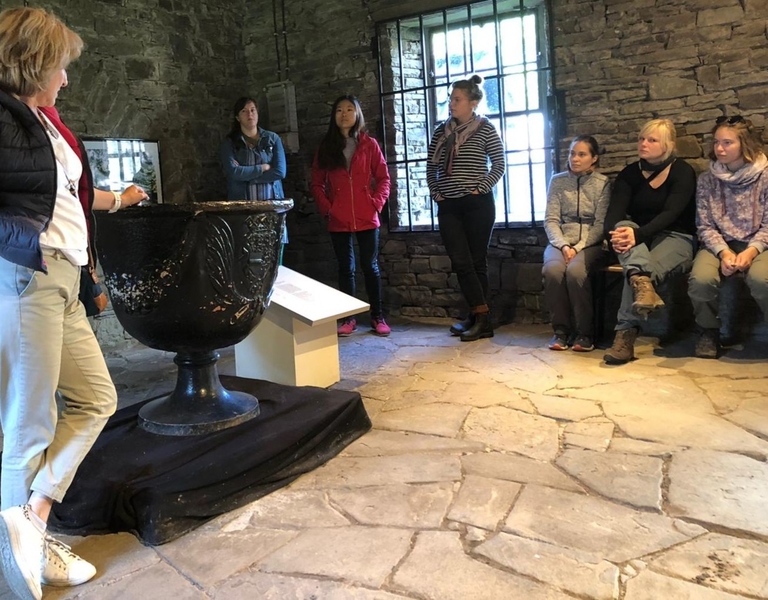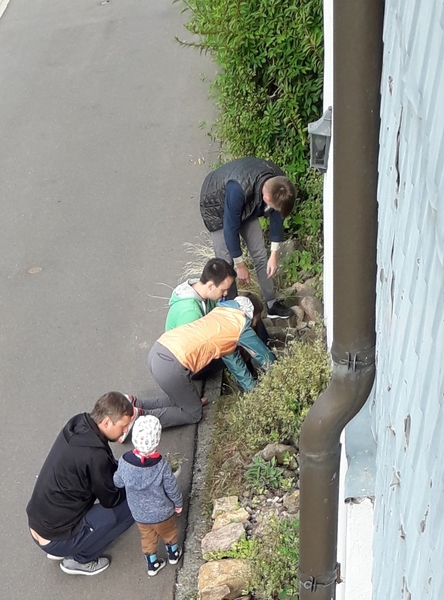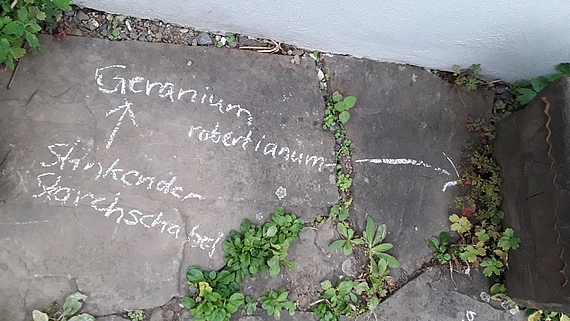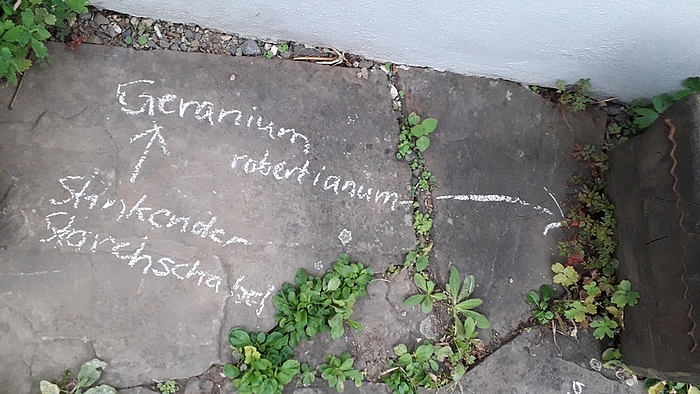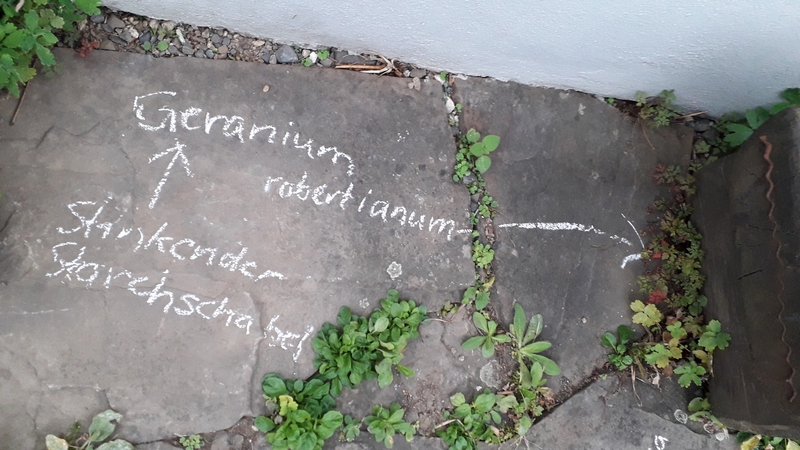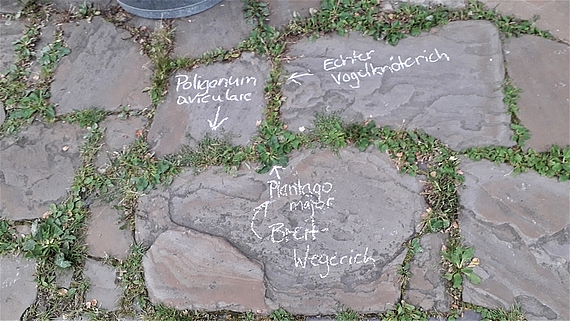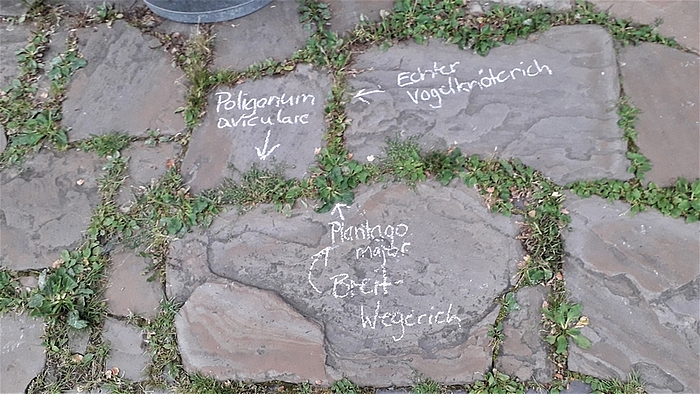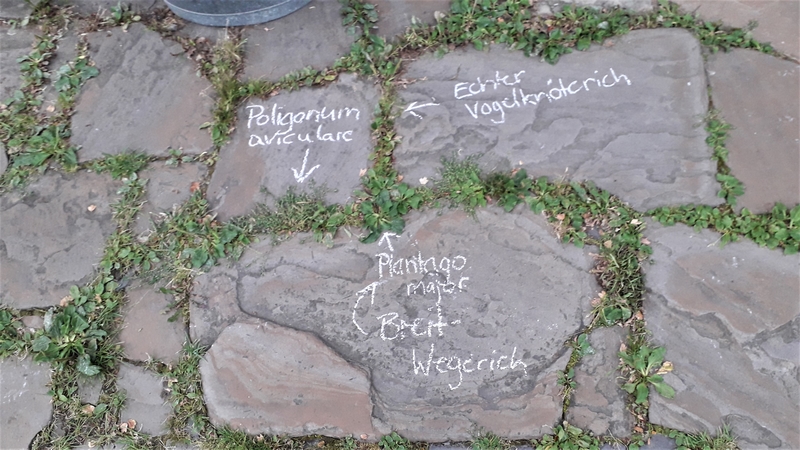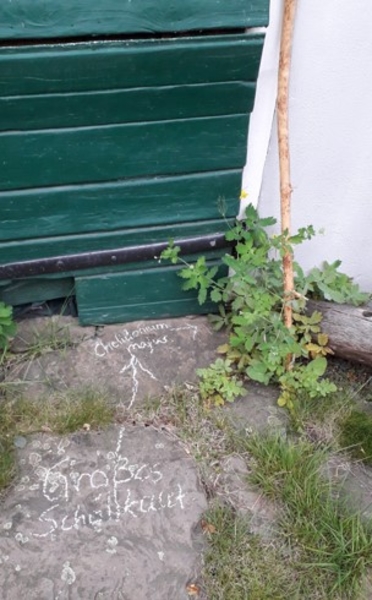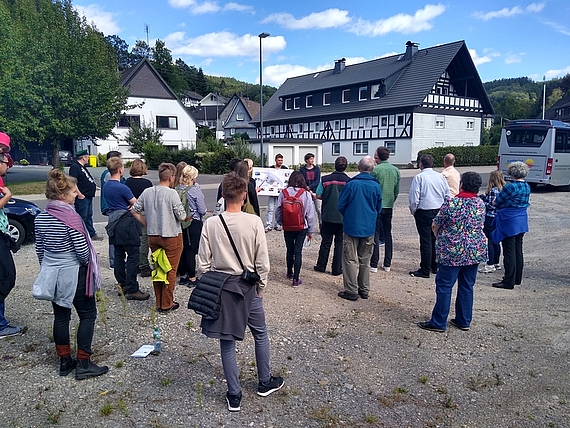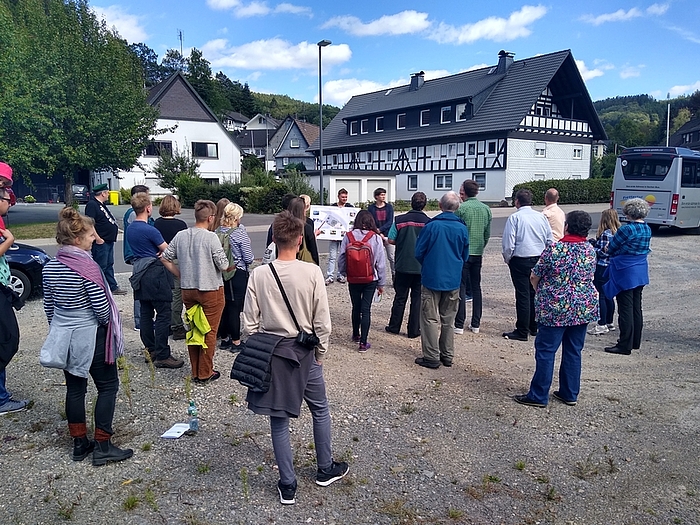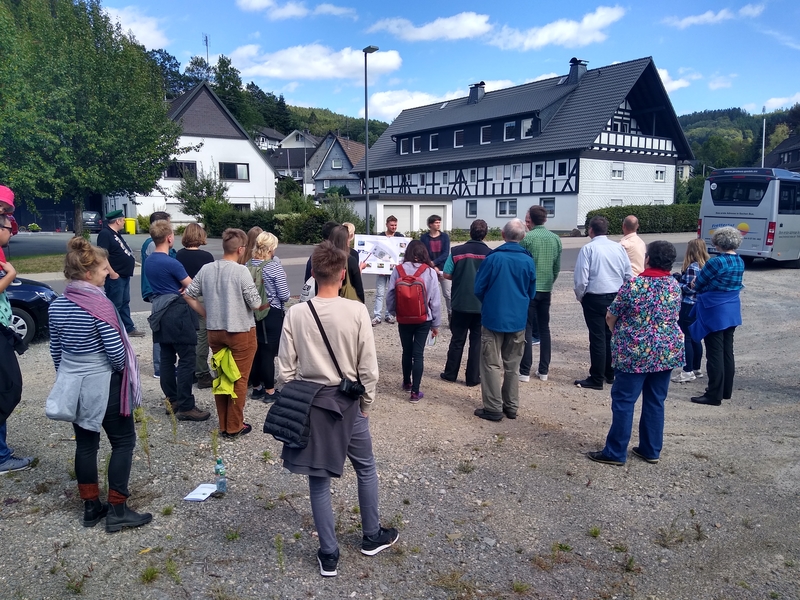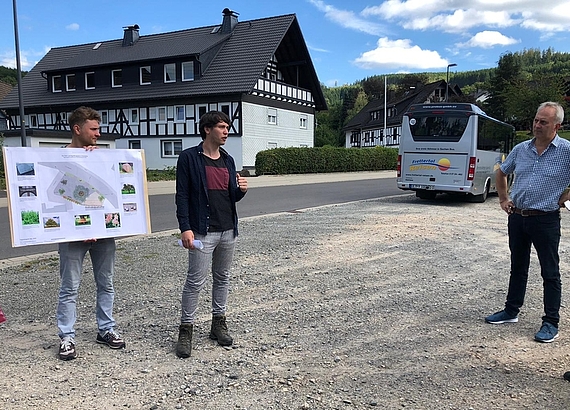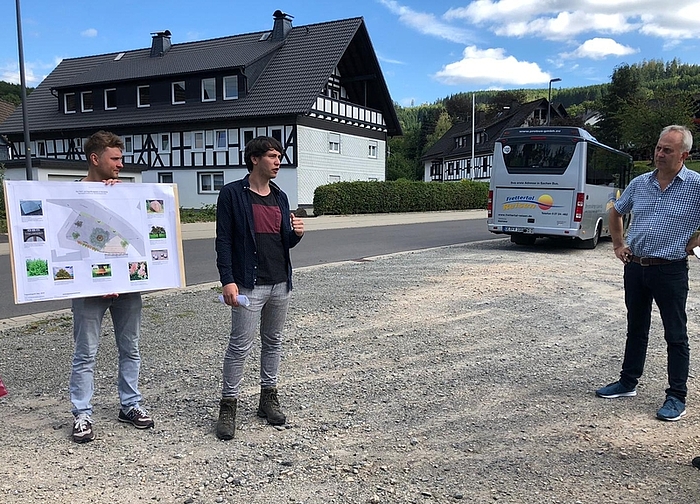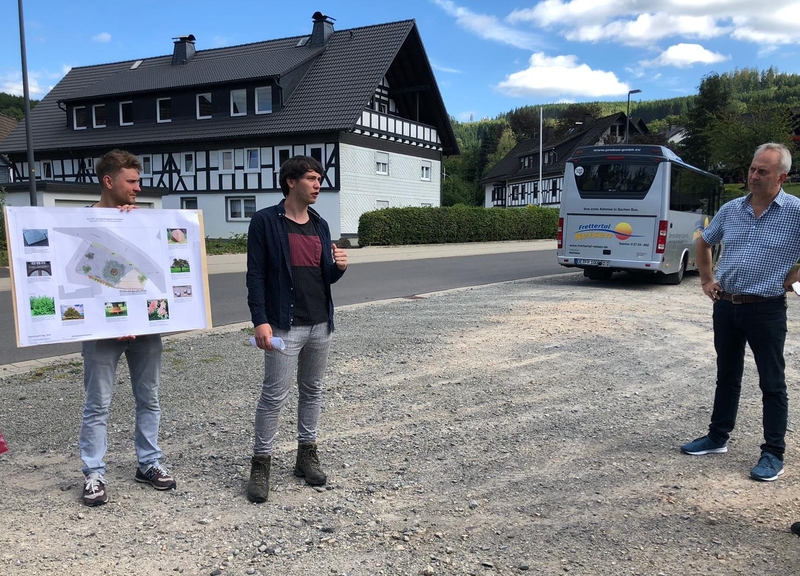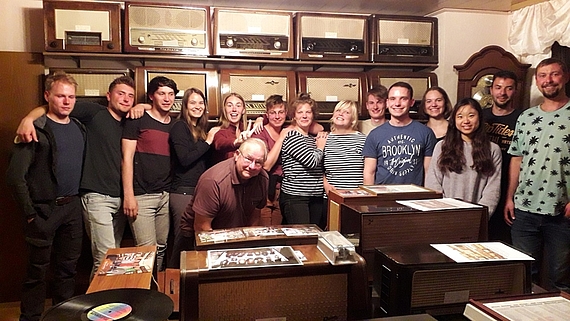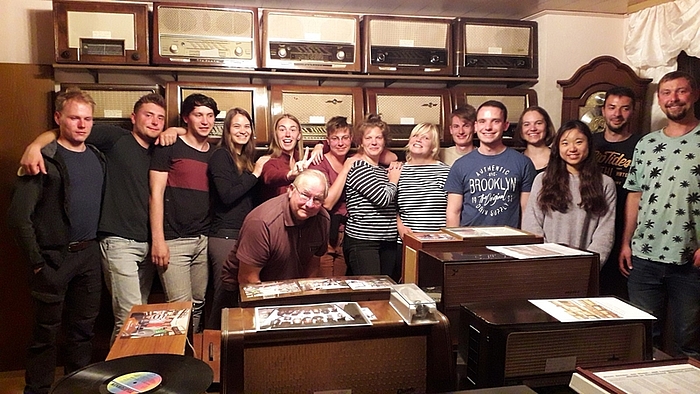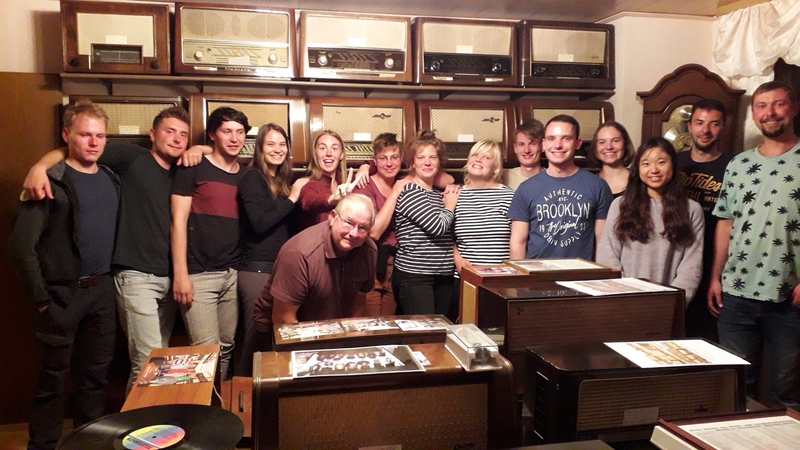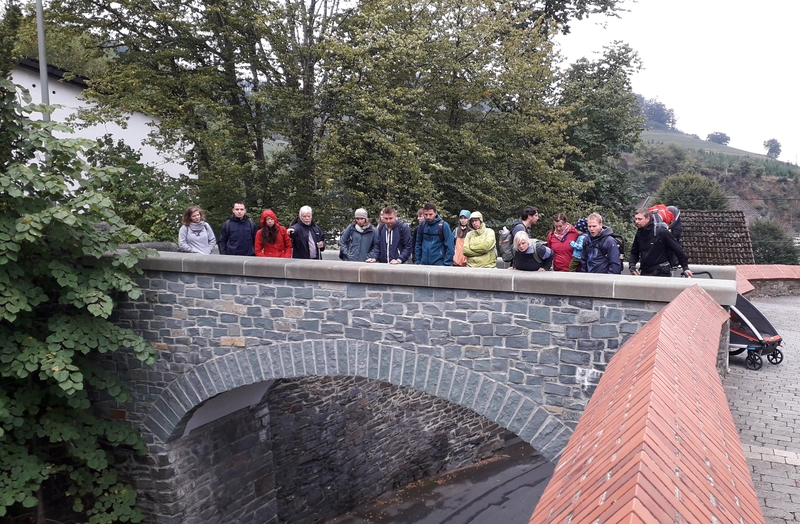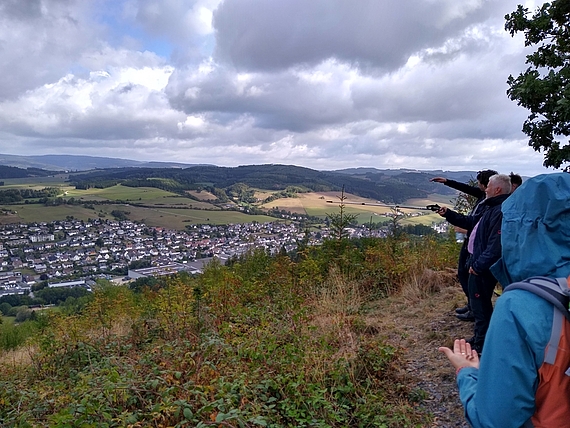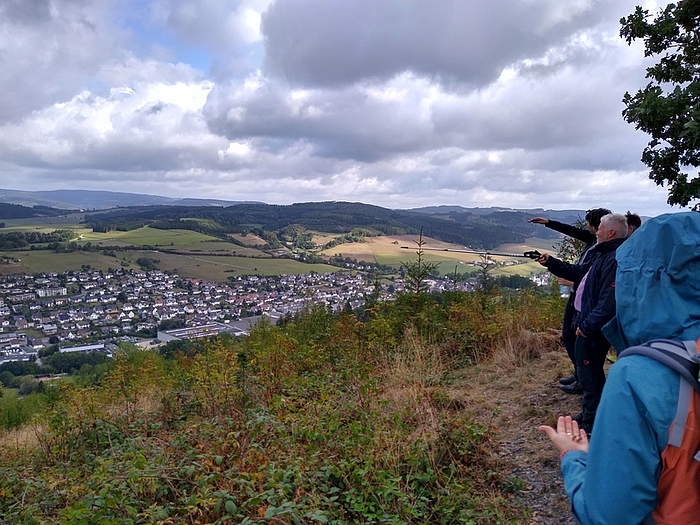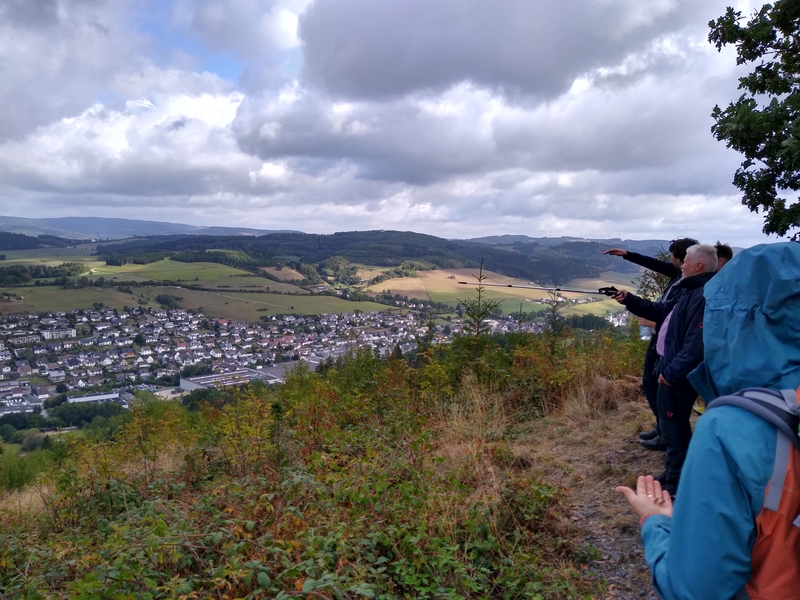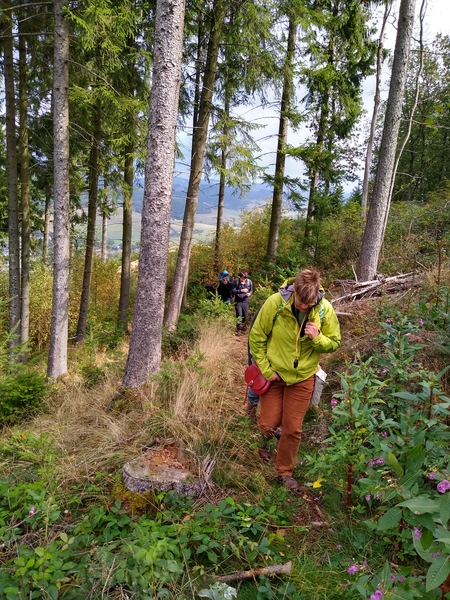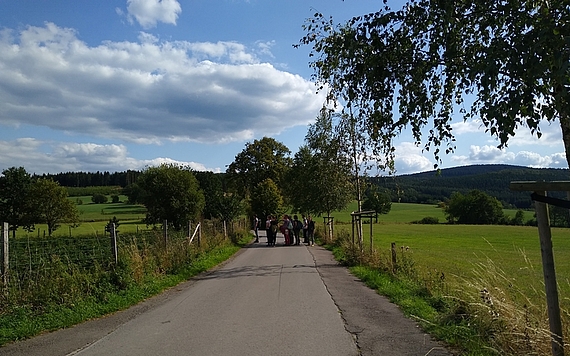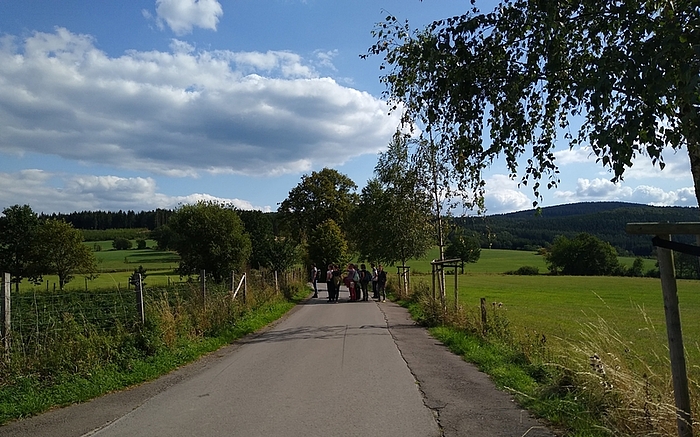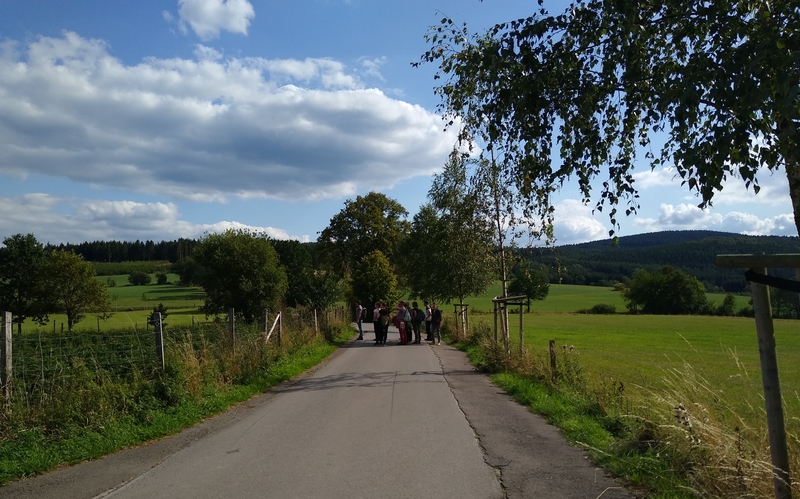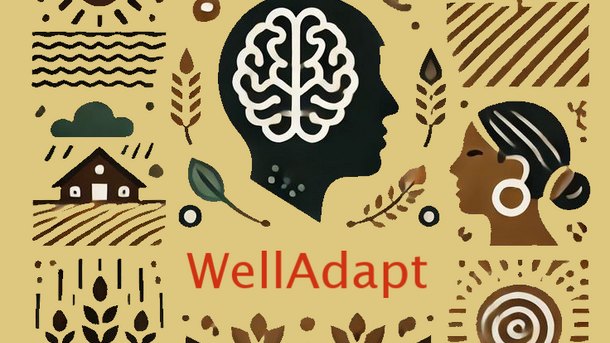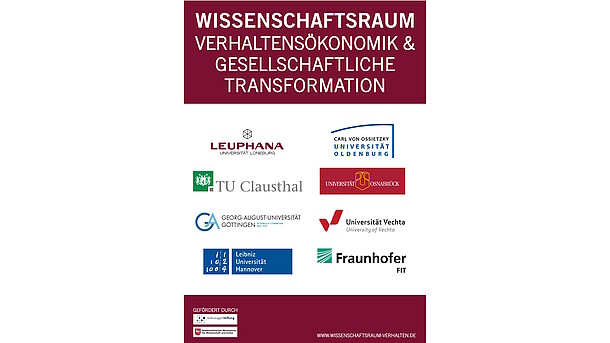The 2019 excursion to the Sauerland Rothaargebirge Nature Park was themed "Learning to read the landscape - nature conservation - village development - tourism". From 2 to 6 September, fourteen students were on the road with Dr Roswitha Kirsch-Stracke in the southern Sauerland (Olpe district, South Westphalia) - exclusively on foot and by public transport. From Hagen, they took the Ruhr-Sieg-Express through the Lenne valley to Lennestadt-Altenhundem. The station building there - built in 1861 from Keratophyr, a local volcanic rock - was the first stop on the excursion. Here, the successful renovation and conversion into a multifunctional building and a demand-oriented redesign of the station forecourt could be observed.
The tour continued by bus in the direction of Kirchhundem. Here Susanne Kues-Gertz, deputy head of the tourist information office Lennestadt-Kirchhundem (Tourist-Info Lennestadt-Kirchhundem), gave an overview of the current tourism projects of both municipalities. Afterwards, the excursion group met village head Tatjana Vente (Ortsvorsteherin Tatjana Vente), who is also chairperson of the "Verein[s] der Freunde und Förderer der Kath. Grundschule St. Christophorus e.V." (Association of Friends and Supporters of the St. Christophorus Primary School) Together with some association members and children, the group climbed from the village centre up to the newly built forest classroom, which is located on a hilltop above the village. The place of learning in the forest (Waldklassenzimmer), which was built with a lot of own work, is not only used by school classes but also by youth groups. The hike continued along the old church path (Alten Kirchweg) to the Krähenpfuhl nature reserve (Naturschutzgebiet Krähenpfuhl). Here the group met Antonius Klein from the Lower Nature Conservation Authority of the Olpe district. Mr Klein explained the habitat of the sub-atlantic juniper high heath and used numerous examples to illustrate the necessary maintenance measures if this habitat is to be preserved in its species spectrum. In doing so, he memorably showed the discrepancies between generally known maintenance recommendations and the many problems and conflicts in the concrete implementation of the measures. Where, for example, to put all the material that accumulates during landscape maintenance?
Albrecht Sandholz, chairman of the Heimat- und Förderverein Albaum e.V., then accompanied the group down the old church path to the village of Albaum. Here, Mr Sandholz explained the set-up and organisation of the Albaum village shop ALDO (Albaumer Dorfladens ALDO), which has been running successfully and in the black since 2011 through civic engagement. After a last stretch by bus, the group reached the village of Heinsberg. Here, the Rucksack Hostel on the Rothaarsteig (Rucksackherberge am Rothaarsteig) has been located in a 250-year-old farmhouse since 2000. Hostel warden Christoph Henrichs, chairman of the Dorf AG Heinsberg, reported on the history of the building. In the self-catering kitchen, the group immediately felt at home, and the first day could end comfortably.
On Tuesday, the group travelled by bus from north-east to south-west through the district of Olpe to Wendener Land. Here they visited a testimony to the early days of industrialisation in South Westphalia, the Wendener Hütte Museum (Museum Wendener Hütte), an old ironworks and hammer mill. Museum director Monika Löcken led a guided tour through the exhibition "Iron Age - Mountainous Region between Celts and Romans", which shows, among other things, information on the early settlement history of the region and makes traces in the landscape comprehensible. Unusual insights were offered by an exhibition of students from the Bremen University of the Arts: "The Other View. Photographs from South Westphalia"("Die andere Sicht. Fotografien aus Südwestfalen"). Far from all clichés, the exhibits show landscape and people in thematic picture series. During the subsequent exploration of the landscape along the hut hiking trail, information boards or information via QR codes helped to read the traces of mining and metallurgy. The visit to the Wendener Hütte ended with coffee and cake in the historic vaulted cellar.
The whole day on Wednesday was dedicated to the concerns and commitment of the people of Heinsberg for their place. Starting at 5 a.m., students in small groups carried out differentiated traffic counts (vehicle registration number, type of vehicle, direction of travel) at the two southern exits of the town in the direction of Hilchenbach (Siegerland). The results document the morning traffic load on the village road.
Afterwards, part of the group did some work around the backpackers' hostel: "Selective weeding" was on the agenda. Strongly seeding plants such as sow thistle (Sonchus arvensis) were removed, while less proliferating wild weeds were left standing. These species were labelled and thus the surroundings of the hostel were prepared as a "temporary botanical garden". Students and interested villagers alike made use of this unusual place of learning. Local curator Hermann-Josef Beckmann took photographs of all the "exhibits".
Another small group visited ALDO in the neighbouring village of Albaum. In addition to the volunteers, four part-time shop assistants now work here. With its range of products, which is always adapted to the needs of the village population, the bank and post office service and the café corner, the shop is an important meeting place in the village. The students were also impressed by the unusual transformation of the old church path into a special kind of cultural project: in 2017, an art course of the Maria Königin grammar school in Altenhundem had furnished the "Kleffweg", which runs along a steep hillside, with 14 works of art. The outer walls of the Albaum church made the students realise the similarity with the Altenhundem railway station building: the church building was also made of the volcanic rock Keratophyr, which turns slightly reddish when exposed to air.
In the afternoon, the municipal competition commission "Unser Dorf hat Zukunft" (Our Village has a future) visited Heinsberg. Student Christian Kruse, who had already been in Heinsberg the previous year, presented the results of his day's work to the commission, a design for the planned "welcome square" in the centre of the village. The Heinsberg Day ended - already traditionally - at Reinhard Flöper's radio museum (Radiomuseum von Reinhard Flöper). The museum with more than 400 radios and other audio exhibits is part of the network Museumslandschaft Kreis Olpe, which connects more than 20 large and smaller museums and collections, offers further education and promotes a joint external presentation.
On Thursday morning, the group set off for the village of Elspe. Here, local historian Wolfgang Poguntke gave an insight into the more than 1000-year history of the village, explaining its location on the Roman road and the Heidenstraße and the building history and furnishings of the church of St. Jacobus (Kirche St. Jacobus), in the centre of which is an old cross. Its age was determined to be over 800 years by dendrochronological examinations. In the centre of Elspe, one can still see how settlement patterns changed due to unforeseen events: after a large village fire in 1805, the former cluster village of Elspe became a planned street village in which all the houses stood gable to the street and had a greater distance from each other - as protection against further village fires caused by flying sparks. From Elspe, the group hiked with Wolfgang Poguntke to the fortress complex on the Weilenscheid (Wallburganlage auf dem Weilenscheid), a ridge south of Elspe. Thematically, the exhibition at the Wendener Hütte came full circle, as the archaeological monument on the Weilenscheid is of Celtic origin.
On the other side of the Weilenscheid is the small village of Hachen. Here the group was awaited by Susanne Falk and Andreas Bieker. The Falk-Bieker family took over an old farmstead 25 years ago and lovingly restored it. In addition to the living quarters, the farm houses a carpentry workshop, seminar rooms and the cultural science office ZeitRaum. Guests are offered a "time-out in the construction trailer" ("Auszeit im Bauwagen") on the fruit meadow. There are other holiday homes in Hachen, so the village community would like to offer its guests a thematic circular trail or a trail with special experiences. This gave rise to the task of a week-long project, the results of which are now available to the Hachen village community, e.g. "Traces of historical land use in the village of Hachen", a compact leaflet for hikers, "Hachen with senses", a series of postcards with suggestions for a more conscious perception of the landscape, "What used to be here? The little colouring book from Hachen", an offer for children and finally "Searching and Collecting", a basket with various suggestions for experiencing the forest for children and their parents.
The fifth day was the day of the return journey to Hanover, but before that a special natural history and tourist attraction of the southern Sauerland was on the programme: the Atta Cave in Attendorn (Attahöhle). It is considered the largest connected cave system in Germany - and the most beautiful dripstone cave in the country.
(Photos: Vera Akimova, Roswitha Kirsch-Stracke, Mathis Züchner)
